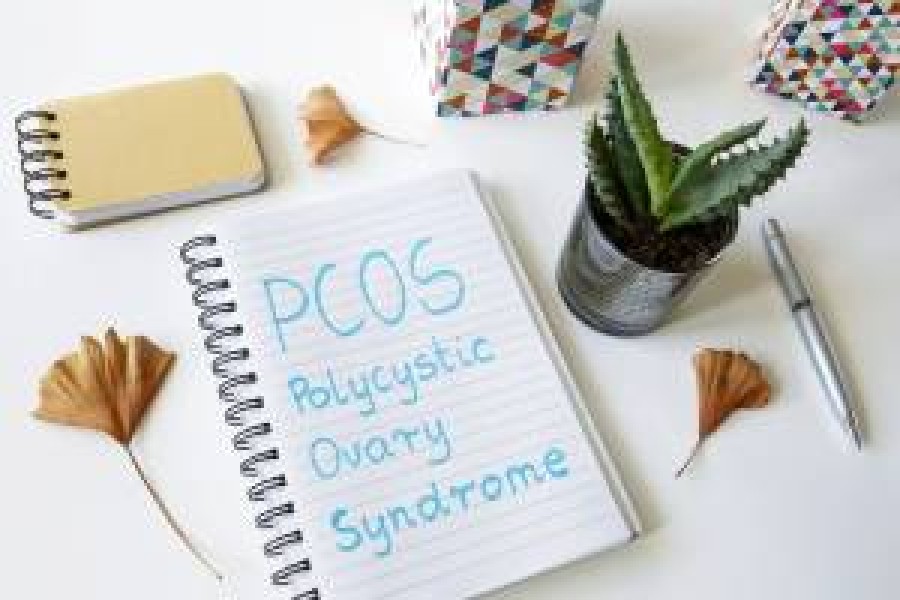Free shipping for orders over 39.00€
Do I have Polycystic Ovary Syndrome?

Polycystic ovary syndrome is a common hormonal disorder that can affect the life of every woman. Of course, it does not need to necessarily make life difficult, if you understand and manage it in time, with the right medical guidance!
Polycystic ovaries are a very common syndrome, affecting 10% of women, occurs in women of reproductive age, and affects the way their ovaries function.

The first symptoms usually occur at puberty although it is not unlikely to appear later in some women. As hormonal changes vary from woman to woman, so do the symptoms.
Usually, women have fewer periods per year (six to eight), while others with normal menstruation during puberty acquire a disturbed cycle with adulthood while, almost half of them, show gradual weight gain and obesity.
Polycystic ovary syndrome is accompanied by three main characteristics:
- period disorders,
- hyperandrogenemia (i.e., the appearance of hirsutism, acne, and oily skin), and
- polycystic ovaries,
Many small cysts are present in the patient's ovaries, which are usually located just below the surface of the ovary and which in size do not exceed 8 millimeters. In fact, these are follicles containing eggs, but due to hormonal disorders, these follicles do not fully develop and stagnate during their progression.
These cysts are associated with disorders of a hormone secreted by the pituitary gland and forms high levels of androgens, which overall affect the function of the ovaries. This results in not one follicle growing in each cycle leading to ovulation, but many small ones that look like vesicles, which do not produce the necessary estrogen to induce ovulation.
What causes the syndrome?
The exact causes that provoke the syndrome are not yet clear. Scientists tend to conclude that it is the result of genetic predisposition (as it tends to occur in the same families) as well as the influence of various environmental factors (obesity and lifestyle).
What are the symptoms of polycystic ovaries?
The most common symptoms are:
- Unstable menstruation or its absence
- Infertility
- Increased hair growth (on the face, chest, stomach, back)
- Oiliness and acne
- Abdominal pain
- Increased weight or obesity
- Type 2 diabetes
- High levels of Cholesterol
- Arterial hypertension
- Android hair loss
- Hyperpigmented spots and stains
- Snoring and sleep apnea
How is the syndrome diagnosed?
A detailed medical history is the first step in diagnosing the syndrome as well as assessing the elements such as obesity or a tendency to easy weight gain, heredity, abnormal cycle, increased hair growth, acne, and alopecia.
The gynecologist or endocrinologist is the doctor who can diagnose through clinical and hormonal control, blood tests, and ultrasound internal genital organs, the existence of the syndrome. Because the condition is associated with menstruation, it is very important that the patient records exactly the frequency of the period as well as any abnormalities that occur in her cycle.
Is there a treatment?
There is no definitive treatment, but there is the management of the symptoms of the syndrome, which is determined by the type of symptoms and focuses on the regulation of the cycle and the correction of any problem of over hairy skin.
In particular, the doctor may suggest the administration of contraceptive pills to regulate the period and hyperandrogenemia while for fertility improvement medication can be provided.
The most common, however, is to ask the patient to modify her eating habits and to include exercise in her daily routine, as it has been observed that women with increased body weight often have polycystic ovary syndrome.
So, it is suggested to focus on eating fruits, vegetables, whole grains, lean meat, fish, chicken and avoiding carbohydrates (white bread, sugar, sweets). Body hydration is equally important and drinking at least 1.5 liters of water per day is advised.
Do Polycystic ovaries associate with malignancies?
Cysts in the ovaries do not run the risk of turning into cancer. However, there is a relative risk of developing endometrial cancer in women who have long intervals without a period, and the action of estrogens is continuous without the protection of progesterone. In this case, preventive hormonal therapy is recommended in the early stages, which stabilizes the cycle and removes the risk of malignant endometrial mutation.
I want to get pregnant, can I?
Polycystic ovaries do not affect conception but may delay it due to unstable ovulation, but this is regulated as ovulation can be induced by medication (success in 75% of patients).






